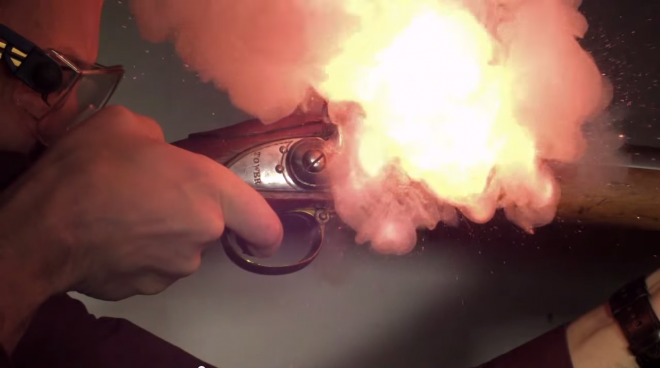This past weekend was the bicentennial anniversary of the Battle of Waterloo, where Napoleon was defeated by the combined armies of the British and Prussians, and which marked the transition of Europe into a four-decade-long peace that would only be interrupted by the Crimean War in 1853.
Waterloo occurred in an era of flintlock primed blackpowder weapons, two examples being the India Pattern Musket (a variant of the famous Brown Bess) and the Model 1805 Baker Rifle. Royal Armouries released slow-motion footage of both weapons being fired in time for the anniversary:
Either video clearly shows how the flintlock priming mechanism works, and how dramatic the delay between pulling the trigger and ignition is. The priming mechanism obscures the sight picture and irritates the shooter – a good reason for many of these early weapons to not have particularly good sights, and the ball meanders lazily out the bore, followed by ejecta that resembles a rocket or jet engine’s exhaust.
However, all this pain and anguish had a major payoff: The terminal effectiveness of the unjacketed lead ball when it hit the target is undeniable, with the embedded bone being shattered into tiny pieces and a major temporary wound cavity being made in the path of the projectile.
 Your Privacy Choices
Your Privacy Choices
